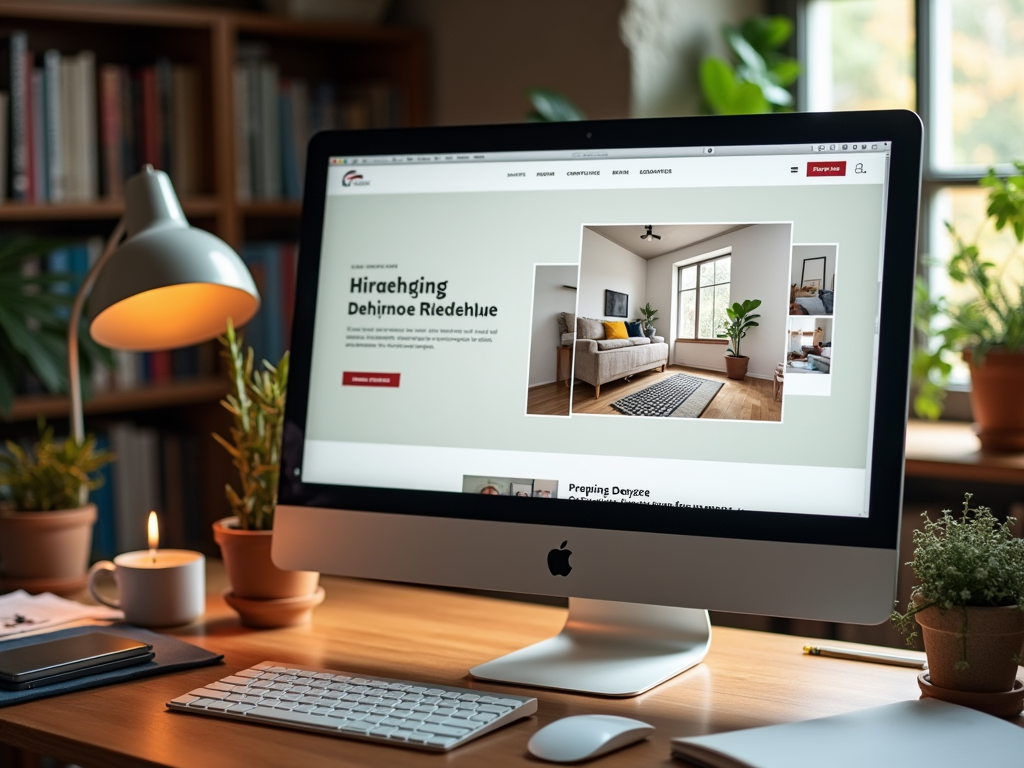In an age where digital presence can make or break a business, the question of whether your website is effectively serving its purpose becomes critical. Just as a storefront may need renovations to attract foot traffic, so too does a website need thoughtful redesigns to engage users. Yet, the path to a successful redesign is not merely about having a fresh look; it’s about crafting a comprehensive proposal that aligns vision with reality. This article will guide you through the intricate process of writing a website redesign proposal, providing you with the foundational elements needed to win stakeholder approval. From understanding the necessity for a redesign to proposing actionable solutions, your proposal will serve as a roadmap for creating a website that not only looks good but performs well.
By delving into the reasons a redesign may be required, identifying key elements for the proposal, and using strategic research and analysis, you’ll build a strong case for your ideas. Furthermore, presenting a transparent budget and clear timelines will reassure stakeholders of your professionalism and competence. This structured approach paves the way for an engaging design that resonates with users while fulfilling business objectives. Let’s explore the essential components of a successful website redesign proposal.
Understanding the Need for a Redesign

In today’s digital landscape, a website serves as the primary touchpoint for most businesses. Over time, as trends change and user expectations evolve, the need for a website redesign becomes essential. A sleek, modern site may boost your brand’s credibility, making it necessary to stay updated. Often, the desire for aesthetic appeal must be balanced with functionality to create a winning combination. Stakeholders should be aware of common signs that indicate it’s time for a redesign.
- Outdated design elements
- Poor user experience
- Low conversion rates
- Difficulty updating content
- Non-responsive design
Key Elements of a Website Redesign Proposal

Creating a solid proposal is the backbone of any successful redesign project. To convey your ideas effectively, your proposal should include several critical components. Each section serves a unique purpose while contributing to the overall narrative that persuades stakeholders. An executive summary, a clear description of objectives, thoughtful research, and analysis, as well as proposed solutions, are vital. Overall, it’s about painting a compelling picture that addresses business needs while prioritizing user experience.
Executive Summary
Dedicate a section to summarize your proposal. This should give stakeholders a high-level overview of what you intend to achieve with the redesign. A succinct executive summary sets the tone for your proposal, framing the specifics that will follow in a way that captures interest. Engaging language can help stakeholders connect emotionally with your vision, making them more likely to support your ideas. Focus on highlighting how the redesign will improve the user journey and benefit business goals.
Objectives and Goals
Clearly define the objectives of the website redesign. Are you looking to improve user experience, increase conversions, or enhance brand identity? Identifying these goals early on will guide every decision throughout the process. Ensure these objectives are measurable so that you can assess the redesign’s success post-launch.
| Objective | Importance | Metric |
|---|---|---|
| Improve User Experience | Crucial for engagement | Time on Site |
| Increase Conversions | Directly impacts revenue | Conversion Rate |
| Enhance Brand Identity | Builds customer trust | Brand Recognition Surveys |
Research and Analysis
Before diving into design solutions, it’s crucial to conduct thorough research and analysis. These steps will provide a clearer understanding of what the redesign needs to achieve, ensuring that no element is overlooked. Conducting comprehensive competitive analysis allows you to gather insights into what works and what doesn’t within your industry. Meanwhile, the development of user personas grounds your design choices, directly correlating them to your target audience’s preferences and behaviors.
Competitive Analysis
Examine competitors’ websites. What works well for them? What’s lacking? Highlighting these findings will provide context for your proposed changes. Knowing industry standards will not only help shape your ideas but also arm you with well-researched reasons to back them up.
User Persona Development
Understanding your target audience is fundamental. Create user personas to guide design decisions and ensure that the new site meets their needs. Each persona should outline demographic details, user behaviors, and goals that influence site usage. By keeping these personas in mind throughout the redesign process, you can make decisions that truly resonate with your audience.
Proposed Solutions
This section is where you get creative. Outline specific design and functionality changes you plan to implement. Your proposals should not only delight the senses but also be practical enough to enhance usability. From visual design improvements to functional enhancements, each element should work harmoniously toward your overall goals.
Visual Design Improvements
Discuss potential design changes, including color schemes, typography, and image use. Ensure that these visual elements align with modern aesthetics and improve brand perception. A fresh, engaging look can significantly elevate user interaction and foster positive sentiment. Consider user feedback and industry standards to strike the perfect balance that meets both appeal and functionality.
Functional Enhancements
Detail recommended features and functionalities that will enhance user experience. This may include easier navigation, improved site speed, and updated technologies for mobile responsiveness. We live in a fast-paced world, where users expect speed and efficiency, and your proposal should reflect that urgency.
Budget and Timeline
Providing a clear budget and timeline is essential for managing expectations. Stakeholders appreciate transparency, particularly when it involves financial investments and deadlines. In this section, outline both projected costs and a timeline that captures the sequence of development phases.
Budget Breakdown
Offer a transparent breakdown of projected costs, including design, development, testing, and any third-party services. Categorizing expenses not only clarifies your understanding of the project but also prepares stakeholders for budget discussions.
Timeline Estimates
Propose a realistic timeline for the redesign process, including phases like research, design, development, and post-launch analysis. This gives stakeholders a comprehensive overview of the project’s length and demonstrates your commitment to delivering on time.
Conclusion
Crafting a website redesign proposal requires careful thought and strategic planning. By clearly outlining objectives, analyzing the market, and proposing actionable solutions within a structured budget and timeline, you can set the stage for a successful redesign project. Your proposal must resonate with stakeholders, reflecting their desires while showcasing your insights and creativity. Balance between data-driven decisions and innovative concepts will create a pitch that stands out. Ultimately, the goal is to create a website that not only looks appealing but also functions effectively to meet business and user needs.
Frequently Asked Questions
- What should be included in a website redesign proposal? A website redesign proposal should include an executive summary, objectives and goals, research and analysis findings, proposed solutions, budget breakdown, and timeline estimates.
- How long does a website redesign typically take? The timeline for a website redesign can vary widely but usually ranges from a few weeks to several months, depending on the complexity of the project and available resources.
- How much does a website redesign cost? The cost of a website redesign can vary based on factors such as the scope of work, the experience of the design team, and additional features required. It’s essential to prepare a detailed budget to keep all stakeholders informed.
- Is a redesign necessary if the website is functional? Even functional websites can benefit from a redesign, especially if they no longer meet current user expectations, fail to convert visitors, or have outdated designs.
- Should I involve my team in the redesign process? Yes, involving your team can lend various perspectives and insights that may enhance the redesign effort, ensuring that it aligns with the overall objectives of the business.
